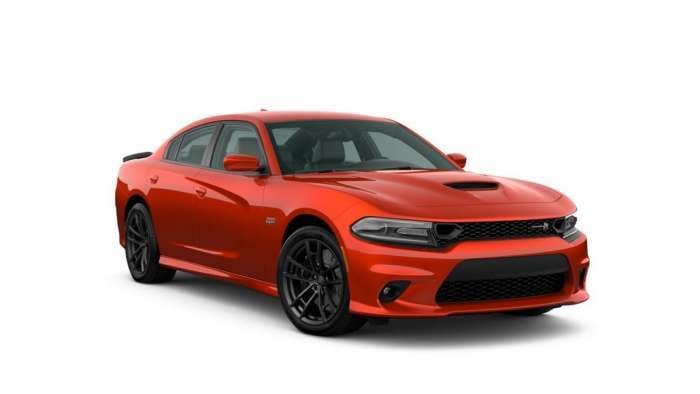The Dodge Charger has been the bestselling full sized sedan in America for years while also being the bestselling rear-wheel-drive car sold in the United States for 2020. In some calendar years, the Ford Mustang has outsold the Charger, but 2019 will not be one of those years, making the big, sporty sedan America’s favorite rear-drive vehicle.
We will know for sure when sales numbers from around the industry come in later this week or next week, but today, we are focusing on production numbers for the 2019 model year Dodge Charger. As is generally the case, FCA doesn’t offer model year production numbers – only calendar year sales numbers – but we are in luck.
PLMCRAZY, the same community member who has been providing detailed breakdowns of Hellcat production numbers since the package was introduced for 2015, has posted production numbers for the 2019 Charger online.
In other words, these are not official numbers from the automaker, but with these being the only numbers available for 2019 Dodge Charger production numbers, numbers provided by PLMCRZY have become the trusted numbers. FCA will not confirm these numbers, but in the past, FCA officials have told me off the record that the numbers “appear to be accurate”.
2019 Dodge Charger Hellcat Production
For the 2019 model year, Dodge built 2,285 examples of the Charger SRT Hellcat. 2,156 of those were for the United States market, 43 stayed in Canada, 78 were sent to Mexico and 8 were shipped somewhere outside of North America.
The most popular color for the 2019 Charger Hellcat was Pitch Black with 673 units while Plum Crazy was the least popular color with just 29 units produced. Grey scale cars – black, white, grey and silver hues – accounted for 1,656 units, of roughly 72% of all Hellcat Charger production in 2019.
Pitch Black – 673
White Knuckle – 413
Destroyer Grey – 238
Octane Red – 179
Granite Metallic – 155
Triple Nickel – 141
Indigo Blue – 124
TorRed – 85
B5 Blue – 84
F8 Green – 50
Sublime – 42
Maximum Steel – 36
Go Mango – 35
Plum Crazy – 30
A production volume of 2,285 units makes 2019 the third-busiest year for the Dodge Charger SRT Hellcat, trailing 4,025 units in 2016 and 2,462 units for 2018. In total, Dodge has produced 11,995 Hellcat Chargers for the 2015 through 2019 model years, and we can expect to see more strong numbers in 2020, thanks to the arrival of the new widebody sedan.
2019 Production Totals
According to the information posted by PLMCRZY, Dodge built 128,273 examples of the 2019 model year Charger, including police vehicles. The most popular model was the base SXT with 42,527 units, followed by the GT at 20,532. When you add in the SXT AWD and the 3.6L Pursuit models, a total of 78,915 2019 Chargers had the Pentastar V6. That is roughly 62%.

The third most-popular trim level after the SXT and GT is the R/T Scat Pack with the 485-horsepower, 392-cubic inch Hemi V8 with 15,491 units. That same engine is offered in the Daytona 392, which moved 1,656 units for a total of 17,147 Chargers built for 2019 with the 392 Hemi.
SXT - 42,527
SXT AWD - 9,218
GT - 20,532
Pursuit 3.6L - 6,638
Pursuit 5.7L - 4,477
Pursuit AWD 5.7L - 9,775
R/T - 14,051
Daytona - 1,623
R/T Scat Pack - 15,491
Daytona 392 - 1,656
SRT Hellcat - 2,285
While 62% of 2019 Chargers were built with the V6 engine, Dodge still moved almost 50,000 V8 models. In an era where so many automakers are focusing on fuel economy, the Charger proves that Americans still want a big sedan with big power.
Click here for a look at 2019 Dodge Challenger Hellcat production numbers.
Patrick Rall is a professional writer and photographer with a passion for all things automotive. Patrick has been sharing his automotive expertise in automotive journalism from Detroit for more than a decade covering the Big Three. Having grown up in his father’s performance shop, he spent extensive time at the oval track and drag strip – both driving and wrenching on various types of vehicles. In addition to working as a writer, Patrick previously worked as an automotive technician before moving on to a business office position with a chain of dealerships, and this broad spectrum of experience in the industry allows him to offer a unique look on the automotive world. Follow Patrick on Facebook, Youtube and Twitter.













Comments
what are the numbers for the
Permalink
what are the numbers for the 2020 dodge charger hellcat Daytona widebody?
What are the production
Permalink
What are the production numbers for 2019 scat charger go mango